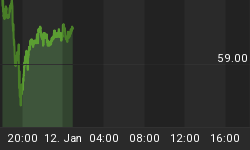Today's May retail sales data provided more confirmation of a significant deceleration in economic growth. Total nominal retail sales were up a scant 0.1%. And without the boost from gasoline sales, which, themselves were probably boosted by gasoline price increases, retail sales were down 0.1%. The April-May average of nominal retail sales ex gasoline is up an annualized 1.7% vs. the first-quarter average. This retail sales aggregate grew at an annual rate of 14.2% in Q1. This is why we are forecasting second quarter real PCE growth of only 1.8% annualized vs. 5.2% in the first quarter.
It appears as though the slowdown in the housing market is starting to have negative multiplier effects on retail sales. For example, the April-May average of furniture and appliance sales is contracting at an annual rate of 2.7% vs. the Q1 average. These sales grew at an annual rate of almost 20% in Q1. Similarly, the April-May average of sales of building materials and garden equipment/supplies is contracting at an annual rate of 5.3% vs. its Q1 average. These sales grew at an annual rate of 33.6% in Q1. (Yes, I know that building materials et.al. are not part of PCE. But they do count n the GDP box score - under residential investment.) We've been told not too worry much about the effect on consumer spending from housing's slowdown because employment growth will pick up the slack. Well, employment growth is slowing, in part because of a slowdown in construction hiring. Is the slowdown in consumer spending that is upon us going to generate increased employment? You need to think in general equilibrium terms, folks - not partial equilibrium terms.
Wholesale Consumer Goods Inflation Moderating
Despite rising commodity prices - rising, that is until the past few weeks - wholesale price increases for consumer goods appear to be moderating. As shown in the chart below, the 6-month annualized rate of growth in the PPI for finished consumer goods ran at 2.4% in May. Its recent peak rate of growth was 9.8% back in December. When energy is stripped out, the 6-month annualized rate of growth in the PPI for finished consumer goods was only 0.5%. The recent peak rate of growth of this measure was 4.4%, hit way back in February 2005. It's that rascally "Owner's Equivalent Rent" that we have to watch out for in the May CPI, which will be released on Wednesday. Ironically, falling natural gas prices, which will hold down the all-items CPI measure, could boost OER. The core giveth and the core taketh away.
















